Toxic algae bloom hits SA at Kangaroo Island, Henley Beach as sharks and cuttlefish found dead
More shock scenes have been captured on camera as a toxic algal bloom continues to impact multiple beaches across SA. Find out where – and what’s washed up now.
Pets and Wildlife
Don't miss out on the headlines from Pets and Wildlife. Followed categories will be added to My News.
A baby shark struggling in the shallows at Kangaroo Island’s Penneshaw Beach and dead cuttlefish found on Henley Beach are the latest disturbing signs of distress along South Australia’s coastline.
The video, posted by Kangaroo Island local Shantel Johnson, shows the small shark swimming around, rolling, and flopping on the shore while an unknown bystander takes footage from the shoreline.
It was filmed from the Sealink ferry as she departed for Adelaide on Thursday, about 9am.
“There are two baby sharks at Penneshaw Beach – one is just swimming in the shallows, and the other keeps washing up and could possibly be dead by now,” Ms Johnson posted on the Kangaroo Island Fishing Scene group page.
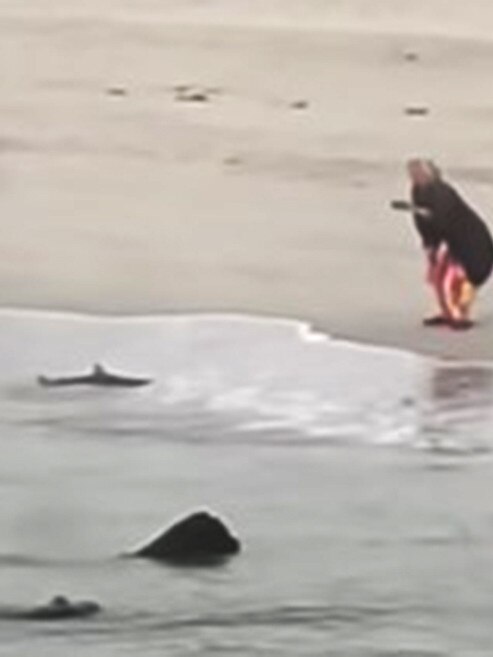
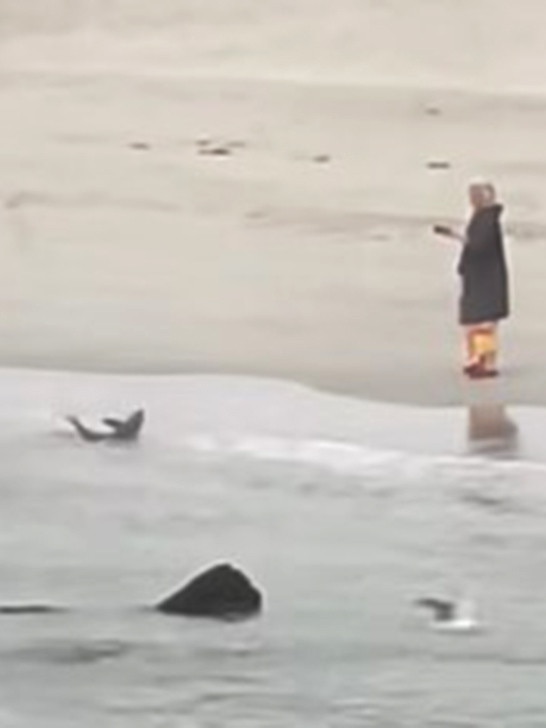
“I believe National Parks officers have attended the beach and were dealing with the shark … so sad,” she said.
The video has attracted comments from concerned locals asking, “When will they do something about this?”
One user (Veronica Bates) shared a photo of a small dead shark at Brownlow Beach with the caption: “This morning.”
Meanwhile, back on the mainland, West Beach local Nicole Maria Peter said she found several dead cuttlefish while walking her dog at West Beach near the surf club on Wednesday night.
“It was very sad to see, so many dead cuttlefish,” she said.
“It’s really concerning — is it something in the sand, or algae in the water?”
Ms Peter, originally from Germany, said she now avoids letting her dog enter the sea.
“She’s not allowed in anymore … Who knows, maybe she’s already getting sick — or worse?”
“West Beach is our backyard beach and we’re scared it won’t stop. We need more information. Is it still safe for humans and dogs?”
Further south, John Garlick posted photos on Thursday morning of two dead spotless smooth hound sharks found on Marion Bay’s Penguin Point.
“There were surfers out just waiting for sharks to have a nibble, but as soon as we arrived, we — and others — started coughing,” he wrote on the post.
“We didn’t hang about.”
He believes the marine deaths are tied to the ongoing algal bloom impacting waters across the state as stated in the post.
On the same day, Bradley David Jamieson shared footage of three small sharks and a stingray swimming unusually close to shore at Kangaroo Island.
“Strange ocean at the moment,” he wrote, tagging the clip with #algalbloom.
The incident follows other recent marine deaths along Adelaide’s central beaches, including a penguin and several sharks at West Beach.
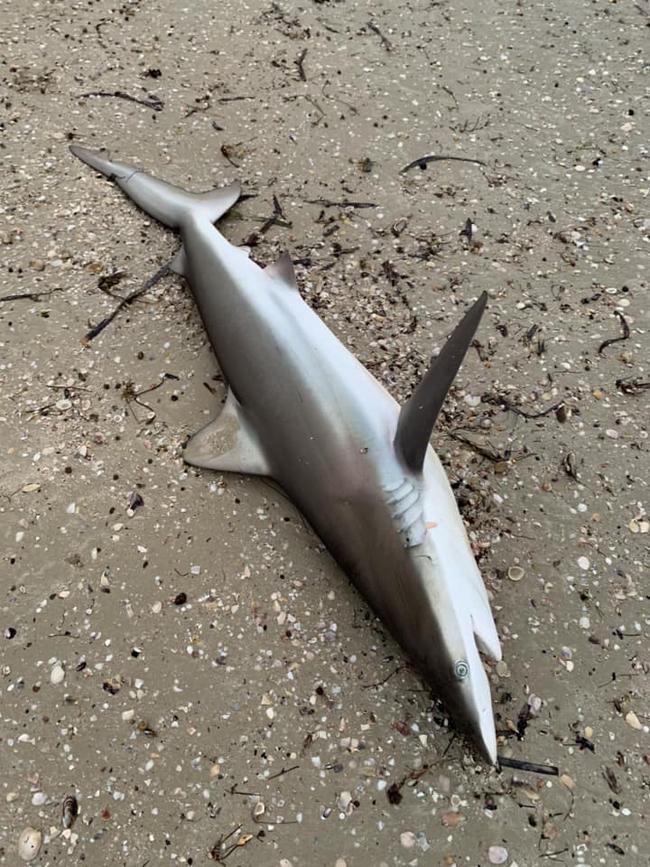
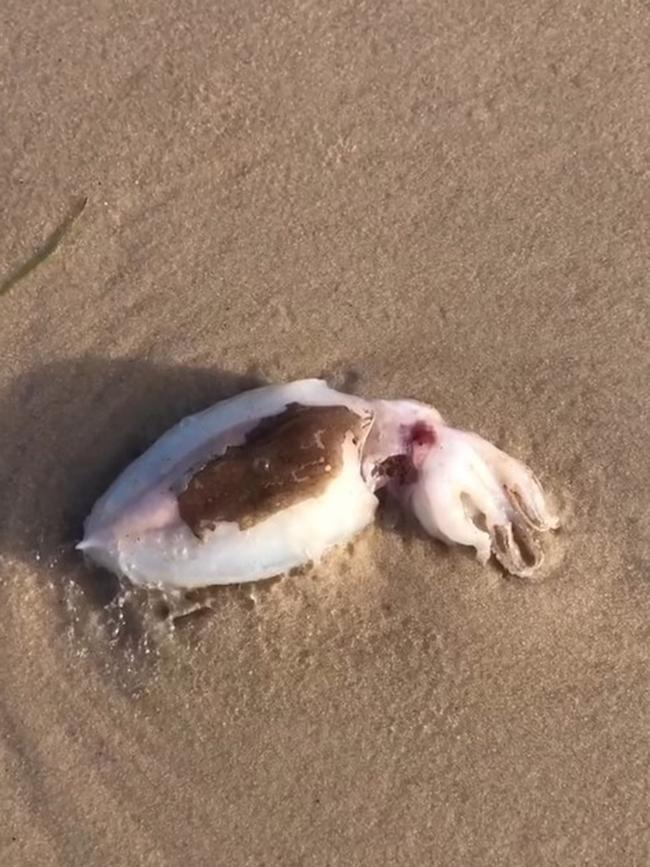
Now a penguin too – SA’s mass marine deaths takes sad twist
Fresh fears of a broader marine crisis unfolding along South Australia’s coastline are growing after a dead penguin was found washed up at West Beach on Wednesday.
The grim discovery was made by Alan Young and was confirmed by John Dundon, a surveyor and founder of the Save West Beach Sand Facebook group.
He said the penguin was found near the outlet, about 7.30am.
It was later removed by council staff.
“Particularly sad walking along our community’s beach and finding deceased marine life – from apex predators to little penguin,” Mr Dundon said.
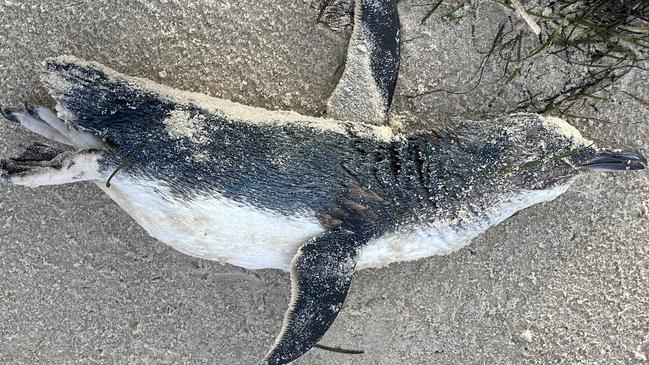
Hundreds of marine creatures – including, penguins, sea dragons, sharks, pelicans and fish – have been reported dead along the north coast of Kangaroo Island due to a toxic algal bloom.
But Mr Dundon said no such bloom was visible at West Beach.
“Just clay plumes and clay fines from the volume of land-based quarry sand being dumped,” he said.
The group is calling for an independent inquiry into marine deaths along Adelaide’s central coast and has questioned whether the dredged spoil and imported sand could be contributing to what it called a “marine environment morgue”.
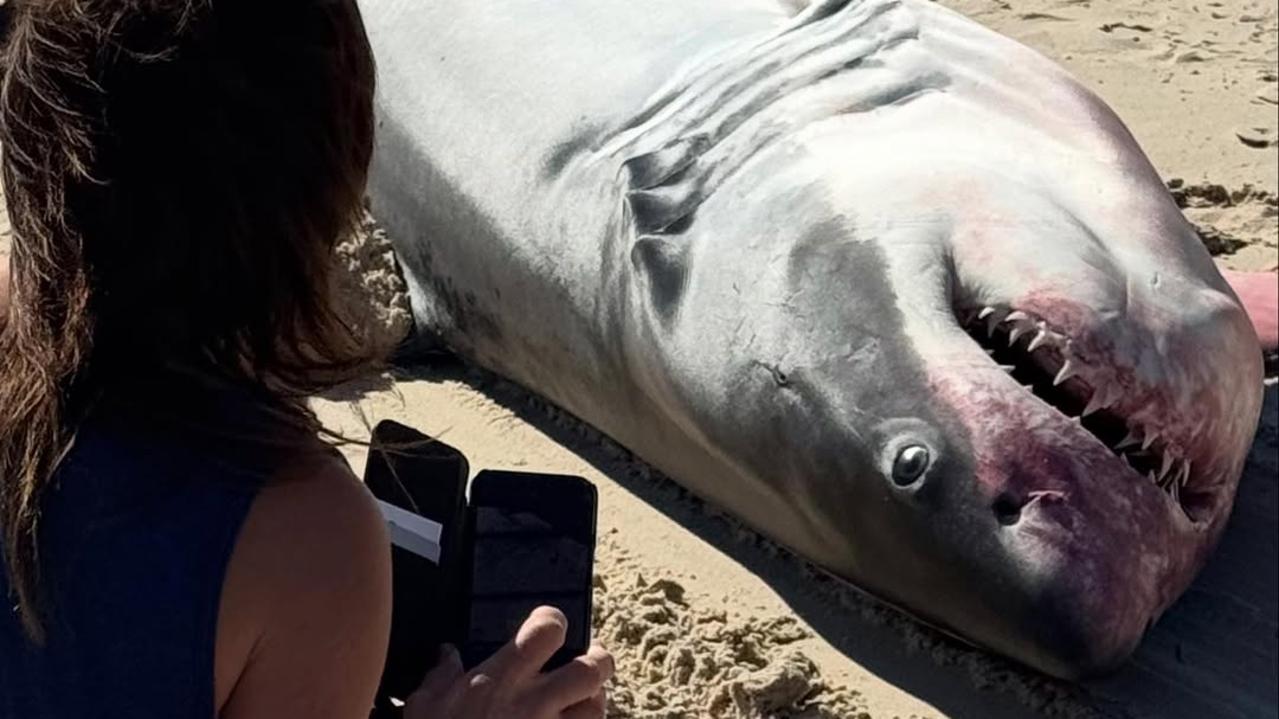
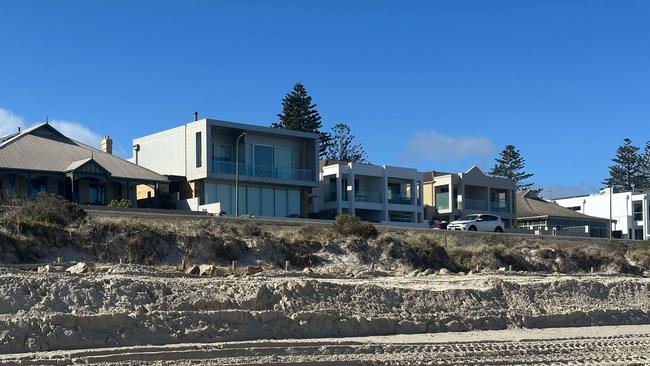
Henley Ward Councillor Kenzie van den Nieuwelaar, speaking as a resident, said the beaches are “in a state of distress”.
“Our beaches resemble construction zones. Truckloads of sterile quarry sand are being dumped, but it offers little lasting benefit. Worse, it’s not natural beach sand – it’s unstable and lacks organic composition.”
She said she had noticed water discolouration and was calling for immediate testing of the sand and autopsies of the dead marine animals.
“This isn’t just erosion – it’s environmental degradation.”
Meanwhile, on Kangaroo Island, the citizen science group Research and Discovery Coastal Tours KI (RAD KI) has been monitoring an outbreak of Karenia mikimotoi — a microscopic algal species known to cause mass fish and invertebrate deaths by depleting oxygen and releasing toxins.
The bloom has left popular beaches like Stokes Bay swamped with thick green slime and yellow-brown foam.
Photos posted online show a dead seahorse held against the murky surf, while locals report itchy eyes, coughing and respiratory irritation.
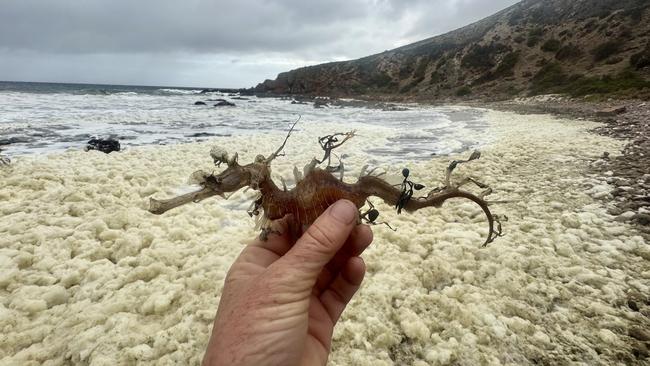
“This is our marine bushfire,” RAD KI wrote in a post.
“Tourists are leaving the beach devastated by the sheer scale of death they are witnessing.”
The group says authorities have been slow to respond, with limited public information or beach warnings in place, despite daily sightings of dead or dying animals.
They are urging the state government to act swiftly by increasing beach signage, centralising marine death reports, and co-ordinating better interagency responses.
While Karenia blooms are not typically caused by pollution alone, experts say climate change, rising sea temperatures, and changes to ocean currents are intensifying their frequency and severity.
RAD KI is continuing to monitor the coastline and encourages anyone who sees dead marine life to contact PIRSA’s Fishwatch hotline on 1800 065 522 or report it to them directly.






